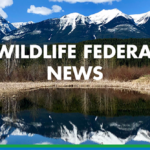Healthy forests dialogue publishes results
In 2009 and through 2010 a growing concern was voiced among professional foresters and biologists, conservationists, academics, community leaders, forest industry support companies and First Nations that British Columbia (BC) forests are in need of greater attention to meet societal expectations over the long-term.
This concern generated the Healthy Forests-Healthy Communities: A conversation on BC forests (HFHC), a non-partisan, volunteer supported initiative to provide an opportunity for experts, communities and concerned citizens to inform decision-makers (government and/or forest industry) of their views and concerns regarding management of BC forests.
The results from 28 expert papers on current and future forest management, 20 community dialogue sessions identifying community issues and suggested actions concluded:
• Communities, experts and professionals are concerned about the future of BC forest lands;
• The concerns are shared by a wide range of stakeholders and First Nations across the Province, including a move away from a current short-term forest industry economic focus to long-term stewardship practices directed at meeting community needs;
• Community issues are consistent throughout BC and communities want:
o More influence on local forest lands decisions;
o More information on the status of local forest lands;
o More diverse economic development opportunities from forest lands;
o More sustainable integrated resource management;
o Better monitoring and assessment of forest lands management;
o A high level of stewardship on private forest lands.
• A forest lands vision and an evaluation framework are required to guide forest management related legislation, regulation, policies, practices and plans;
• Experts are of the opinion more needs to be done in forest management to achieve the draft BC forest lands vision and deliver on the needs of communities over the long-term;
• Innovative solutions to twelve (12) key challenges arising from the expert opinions are needed.
It is recommended:
1) Political parties engage in dialogue with communities and concerned citizens regarding community and family long-term needs;
2) Government adopt the requirement for a forest lands vision to guide legislation, regulation and policy;
3) Government review the legislation, regulation and policies to be consistent with the focus on long-term forest lands stewardship to meet the forest lands vision;
4) Decision-makers adopt the key messages and challenges identified though the HFHC;
5) Decision-makers establish opportunities to bring together people to generate innovative actions to address issues and challenges
Healthy Forests-Healthy Communities: A conversation on BC forests
Web: http://bcforestconversation.com Email: info@bcforestconversation.com;
6) Communities identify initiatives to assist in providing clarity regarding what is needed from local-regional forest lands and mechanisms to become more involved in forest management decisions;
7) Professional associations and academia consider development of a program to provide capacity building assistance to communities.
A 2012 HFHC activities plan is presented to build on the results from 2011.
The full 2011 Healthy Forests-Healthy Communities Activities Report and supporting material can be obtained from the HFHC website (http://bcforestconversation.com).
Enquiries should be directed to info@bcforestconversation.com or the HFHC Coordinator, Bill Bourgeois (604 924-0765 or 604 836-0765).



























Comments